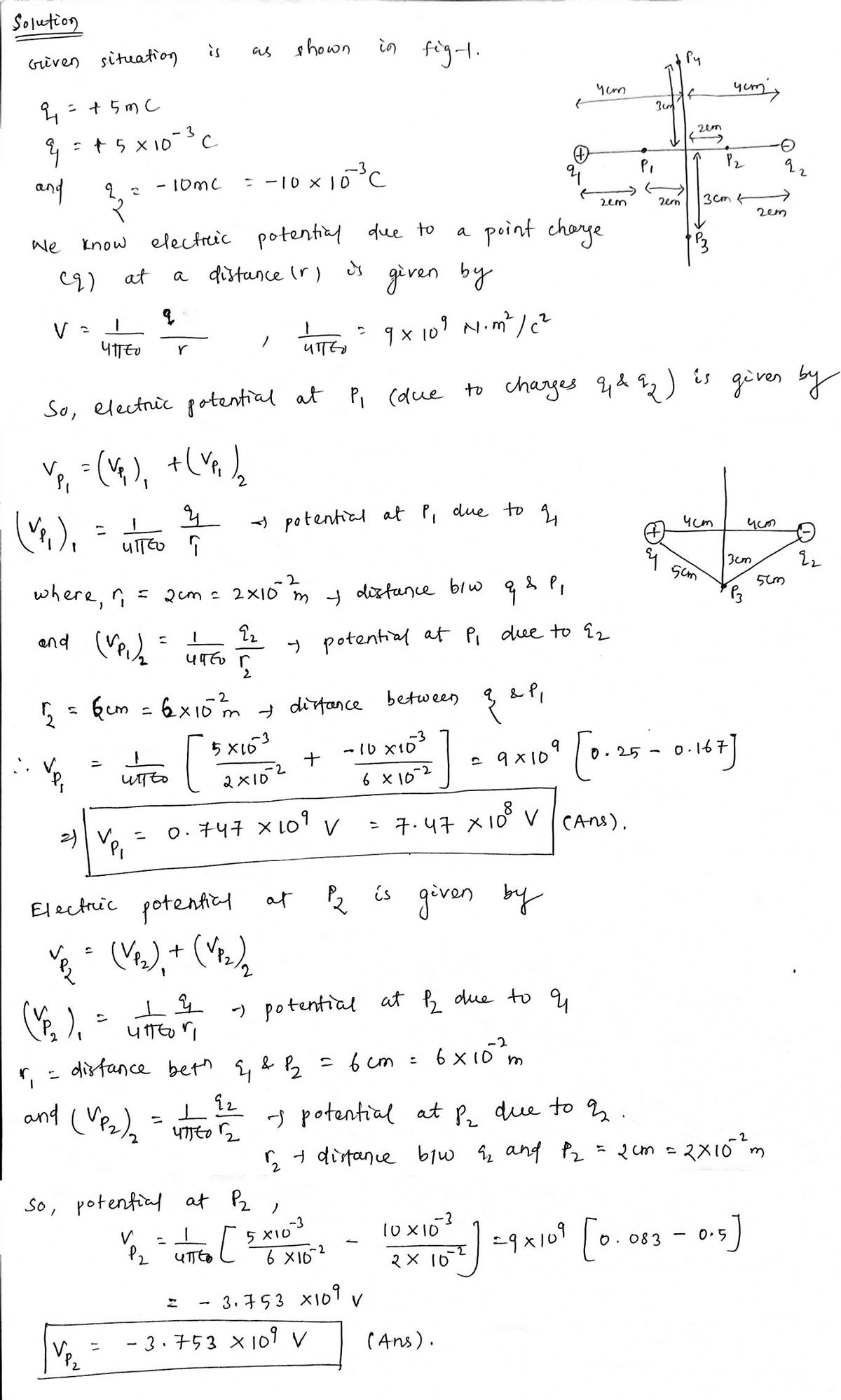Problem 4: UP 7.52 modified Consider the two charges shown in the figure to the right. (a) Find the electric potential at the points P₁, P2, P3, and P4 as labelled in the figure. F +5 mC -4 cm- P₁ 3 cm 2 cm-3 cm P3 4 cm- -2 cm- P₂ -10 MC (b) Suppose a third charge, with q = -8 mC, is placed at point P3. Determine the electric potential energy of the system of all three charges.
Problem 4: UP 7.52 modified Consider the two charges shown in the figure to the right. (a) Find the electric potential at the points P₁, P2, P3, and P4 as labelled in the figure. F +5 mC -4 cm- P₁ 3 cm 2 cm-3 cm P3 4 cm- -2 cm- P₂ -10 MC (b) Suppose a third charge, with q = -8 mC, is placed at point P3. Determine the electric potential energy of the system of all three charges.
Related questions
Question

Transcribed Image Text:Problem 4: UP 7.52 modified
Consider the two charges shown in the figure to the right.
(a) Find the electric potential at the points P₁, P2, P3,
and P4 as labelled in the figure.
(
1
+5 mC
T
3 cm
4 cm-
P₁
P₁
P3
2 cm 3 cm
4 cm
-2 cm-
P₂
1
(b) Suppose a third charge, with q = -8 mC, is placed at point P3. Determine the electric
potential energy of the system of all three charges.
P.
b
-10 mc
Problem 5: UP 7.43
The electric field in a region is pointed away
from the z-axis and the magnitude depends on
the distances from the axis. The magnitude of
the electric field is given as E = a/s where a is
a constant. Find the potential difference
between the two points P₁ and P2, shown in the
figure to the right. Explicitly state the path over which you conduct the integration for the line
integral.
Expert Solution
Step 1

Step by step
Solved in 3 steps with 3 images
